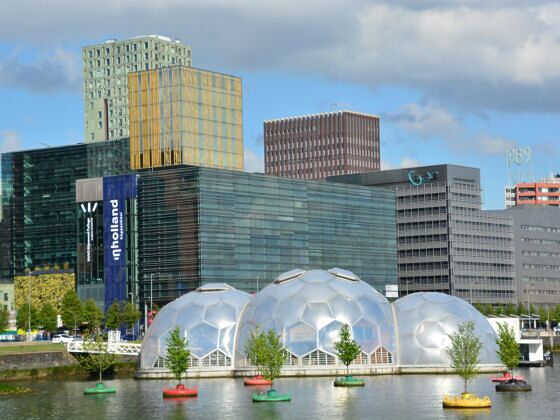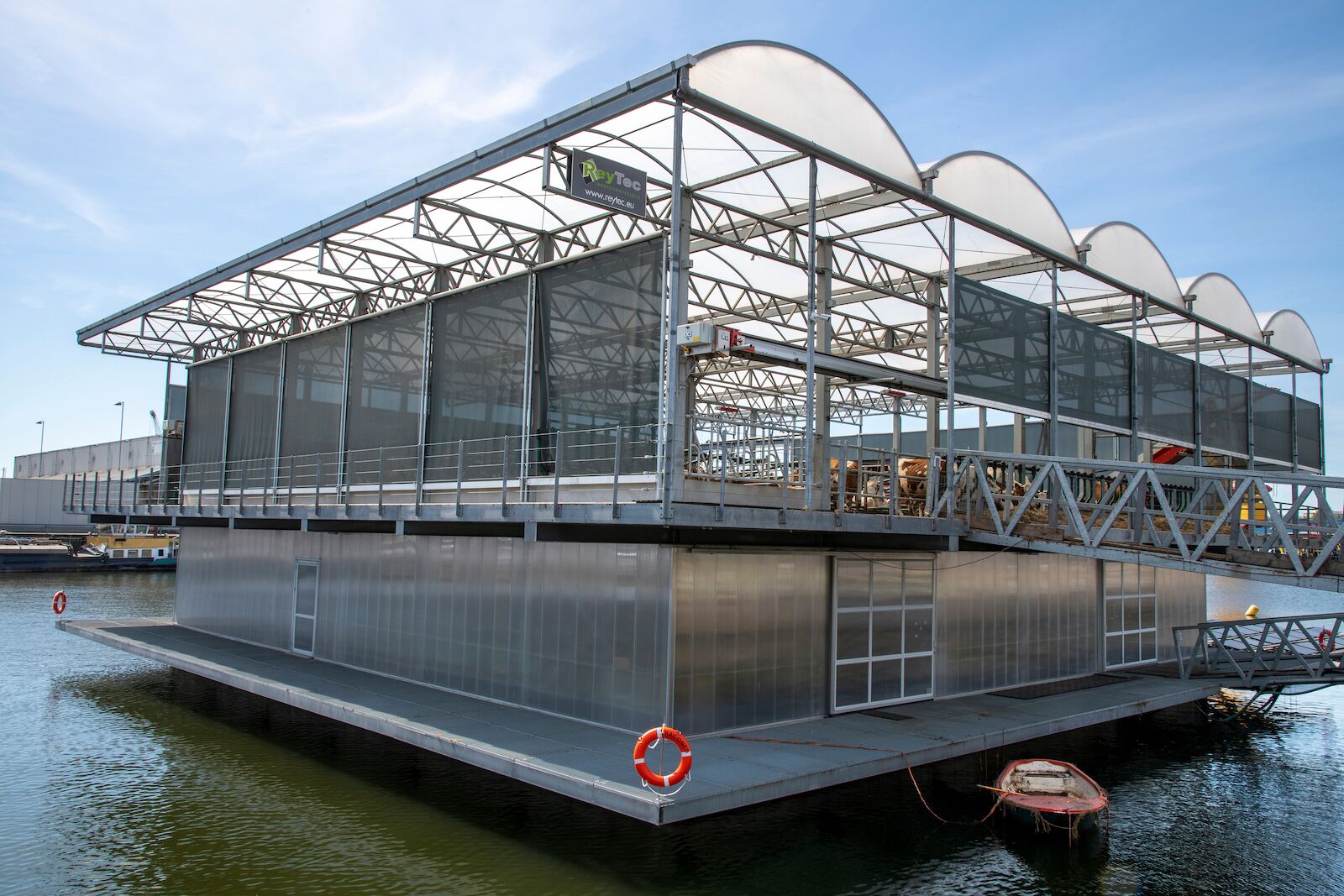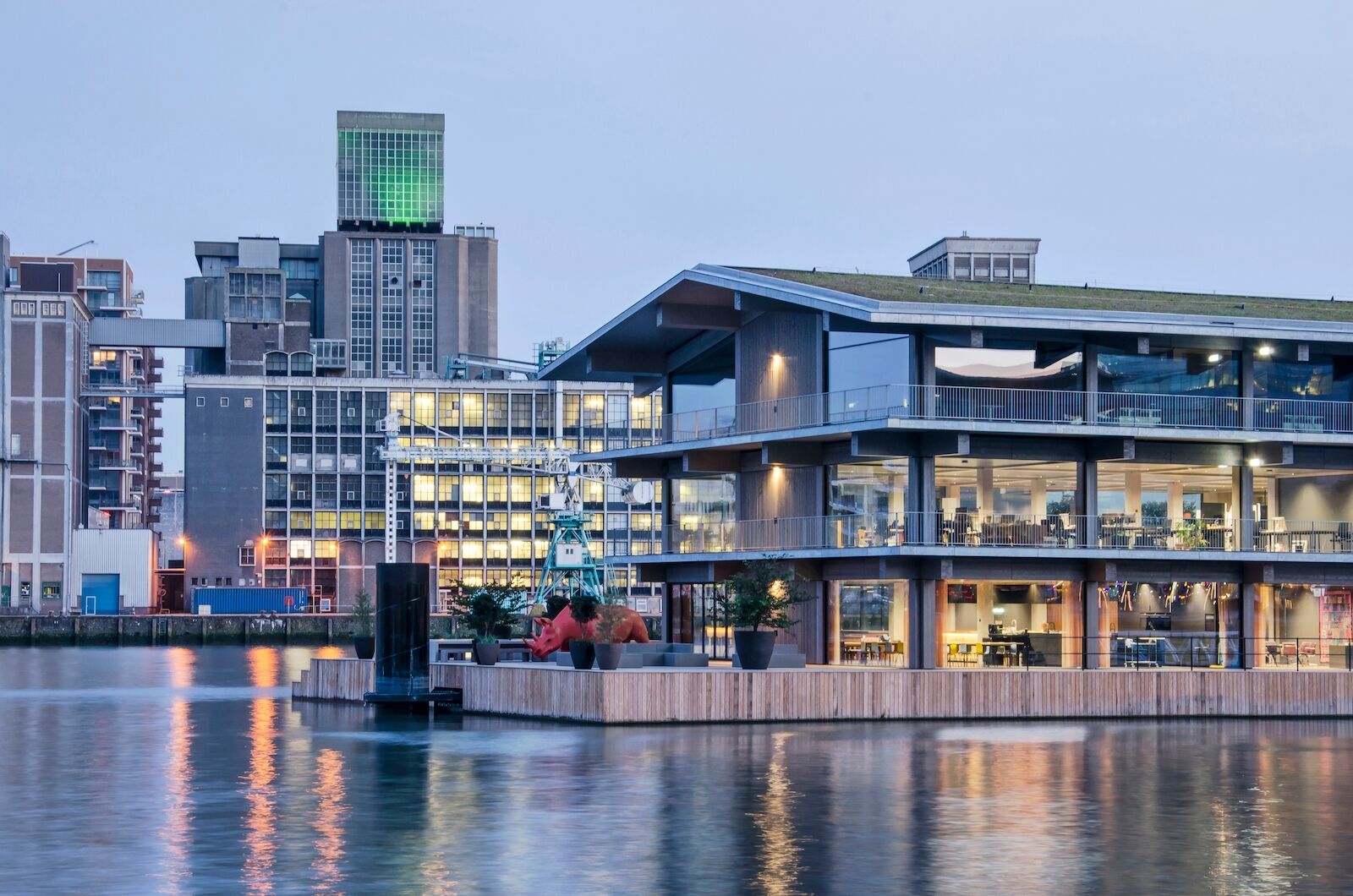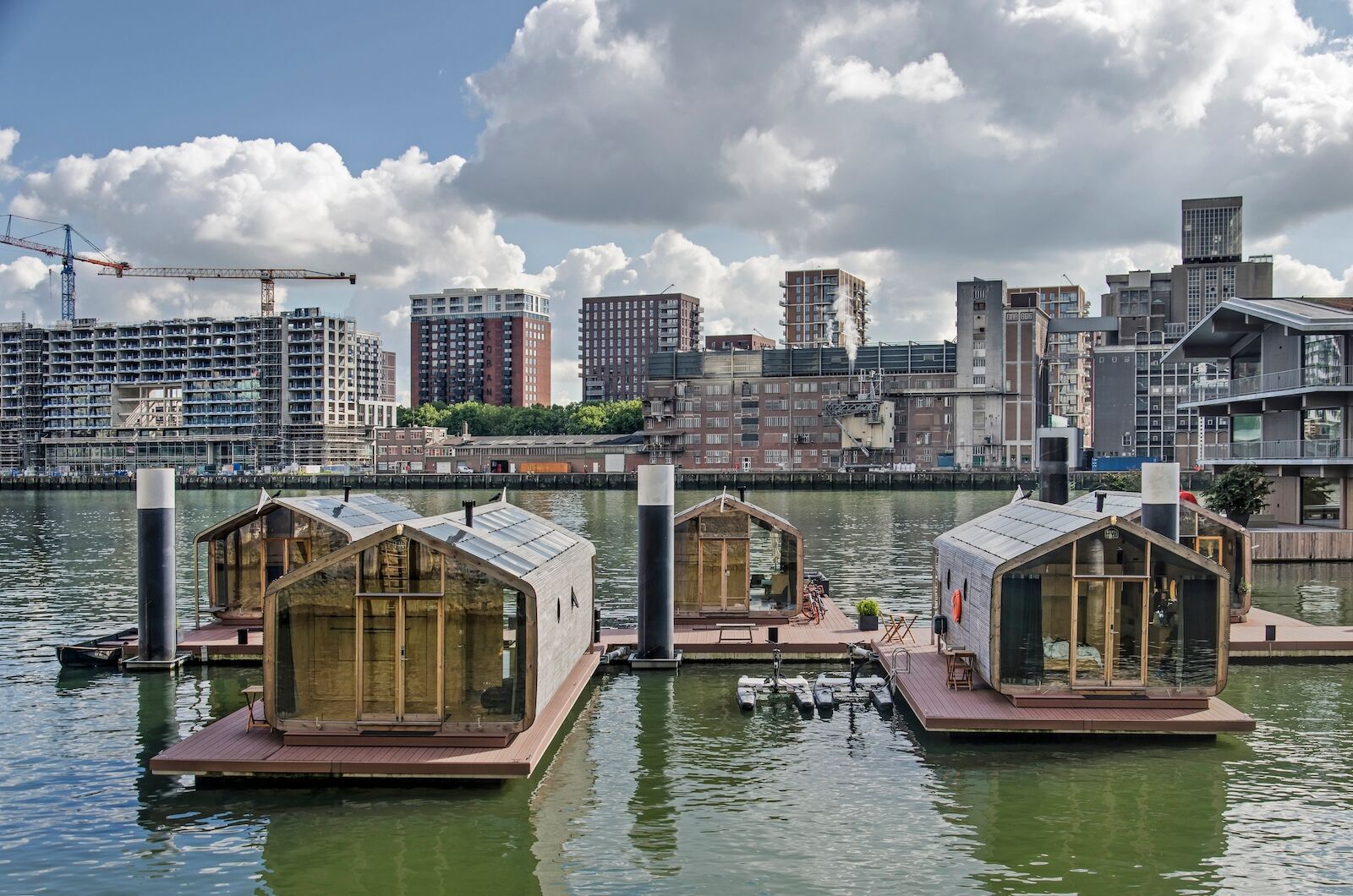Rotterdam, a city vulnerable to rising sea levels and limited land, is pioneering floating infrastructure as a solution. The Netherlands’ second-largest city, home to some 600,000 residents, is the world’s most striking example of what a city can be in an era of both rapid technological development and climate change. It’s known for forward-thinking architecture like the upside-down-U-shaped Market Hall apartment and commercial complex and the Luchtsingel elevated park. But the most innovative development in Rotterdam happens on the water – a resource in which the city has in abundance. Travelers to the city can now see this innovation firsthand via a new “Rotterdam Floating City Tour” from De Rotterdam Tours.


A Rotterdam 'Floating City Tour' Showcases the Coolest Climate-Resilient Architecture
How Rotterdam is using floating infrastructure to develop climate resilience

Floating dairy farm. Photo: 365 Focus Photography/Shutterstock
Rotterdam as it existed before World War II was leveled by the Luftwaffe in 1940, the victim of heavy aerial bombardment during the German invasion of the Netherlands. In the wake of this tragedy, Rotterdam rebuilt itself as one of the most architecturally forward-thinking and innovative cities in the world. More than 80 years on, nowhere better exemplifies proper urban planning.
“Rotterdam is very into being a city of innovation,” Brenda Kamphuis, owner of De Rotterdam Tours, told Matador. “The slogan used to be ‘Rotterdam Make It Happen,’ and now it’s more about “Resilient Rotterdam” or ‘Rotterdam Steps Ahead.'”
These innovative structures are designed to thrive amidst climate challenges like rising sea levels and coastal erorison. Unlike traditional buildings, they can rise with the water level, protecting them from floods and ensuring usability as sea levels climb. They can also bob with waves during storms, minimizing damage from surges. Notably, densely-built Rotterdam can create more usable space without claiming land, addressing land scarcity.
“There’s not a lot of room in the city, but we have water, so why not expand on the water?” Kamphuis says. “Rotterdam is a living lab. We deal with climate adaptation, we experiment, whether its yellow architecture or with how to deal with rising water. We just do it.”
These structures can also be designed sustainably, like the Floating Office with its solar panels and water-based climate control system. Other example include a floating farm, a floating park, and the famous Wikkelboats, which provide efficient spaces for residents and tourists to stay on the water. Rotterdam’s floating infrastructure encapsulates the city’s forward-thinking approach to climate adaptation, creating space to live and work on the water while safeguarding against rising sea levels. The city is also building a city beach in the Rijnhaven, or former city harbor, and a downtown wave pool called Rif010 that will open to the public in July 2024.
What to know about De Rotterdam Tours’ “Floating City Tour”

Floating office building. Photo: Frans Blok/Shutterstock
The idea for the floating city tour came from the company’s mantra of always making custom tours for its guests. The city has gained increasing notoriety for its floating infrastructure as a tool for climate resilience, but much of it is closed to the public. So Kamphuis and the team at De Rotterdam Tours arranged with property and business owners to take their guests to inside these places that they otherwise wouldn’t be able to see.
“When you are in the Rijnhaven, you have a floating farm, you have a floating park, you have floating Wikkelboats,” Kamphuis says. “We feel like it’s really nice for anybody just to see it, so we put it into a program that’s tailor made.”
Along the route travelers learn about the rebuilding of the city and its docks, including how they’ve evolved over decades to play a critical role in making the growing consortium of floating infrastructure possible. The tour passes by the Floating Havenlofts at Nassauhaven, a development of floating homes, and a guide that explains the evolution and significance of what’s viewable from the boat.
The tour includes access to three private areas that are generally unavailable to travelers. One is the deck where Wikkelboats, or small floating houseboats made of wrapped paper, are parked. Another is a floating office park, and finally, a floating oark. The “XL” version of the tour includes a visit to a floating farm – complete with animals – and starting in 2025 a floating brewery, where the tours will engage in a beer tasting. Travelers reach the floating infrastructure via a water taxi, which in itself provides a unique way to see the city.

Wikkelboats. Photo: Frans Blok/Shutterstock
Tours cost $485 Euros, about $527, plus a small water taxi fee, and must be reserved in advance. The Rotterdam Floating City Tour, bookable via the company’s website, is two hours long and only available for groups, though you can add on the additional stops for the “XL” tour – including the farm and in 2025, the brewery – for an additional 125 Euros. Both tours offer perhaps the best glimpse into the future of climate-resilient urban design anywhere in the world.
“We use our water for climate adaptation not only for floating projects but also for tide parks, to grow food on the flat roofs, to retain water, and to help biodiversity, Kamphuis says. “It’s literally another level. Now we have the opportunity to use all of this for climate resilience.”